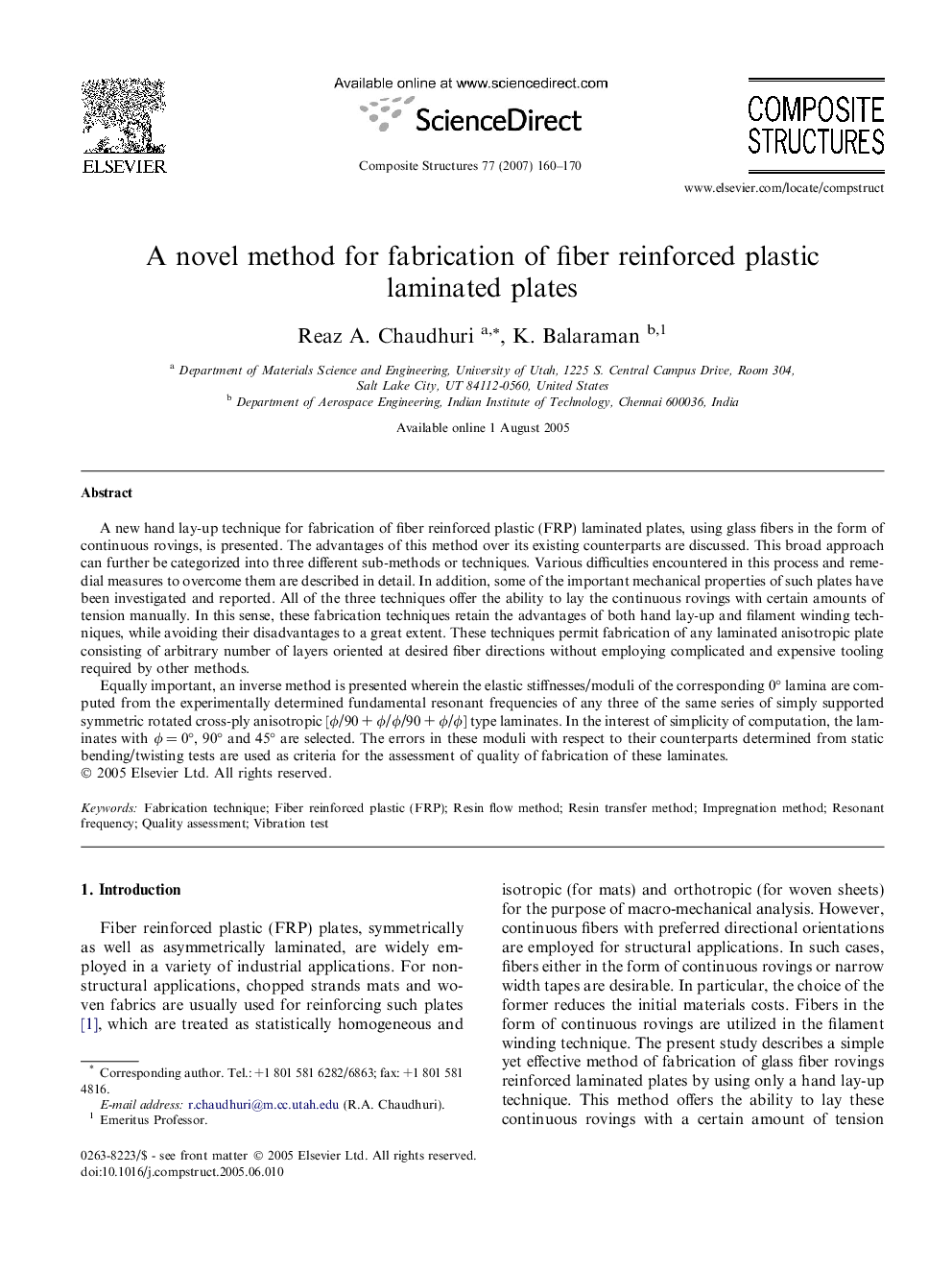| Article ID | Journal | Published Year | Pages | File Type |
|---|---|---|---|---|
| 254052 | Composite Structures | 2007 | 11 Pages |
A new hand lay-up technique for fabrication of fiber reinforced plastic (FRP) laminated plates, using glass fibers in the form of continuous rovings, is presented. The advantages of this method over its existing counterparts are discussed. This broad approach can further be categorized into three different sub-methods or techniques. Various difficulties encountered in this process and remedial measures to overcome them are described in detail. In addition, some of the important mechanical properties of such plates have been investigated and reported. All of the three techniques offer the ability to lay the continuous rovings with certain amounts of tension manually. In this sense, these fabrication techniques retain the advantages of both hand lay-up and filament winding techniques, while avoiding their disadvantages to a great extent. These techniques permit fabrication of any laminated anisotropic plate consisting of arbitrary number of layers oriented at desired fiber directions without employing complicated and expensive tooling required by other methods.Equally important, an inverse method is presented wherein the elastic stiffnesses/moduli of the corresponding 0° lamina are computed from the experimentally determined fundamental resonant frequencies of any three of the same series of simply supported symmetric rotated cross-ply anisotropic [ϕ/90 + ϕ/ϕ/90 + ϕ/ϕ] type laminates. In the interest of simplicity of computation, the laminates with ϕ = 0°, 90° and 45° are selected. The errors in these moduli with respect to their counterparts determined from static bending/twisting tests are used as criteria for the assessment of quality of fabrication of these laminates.
